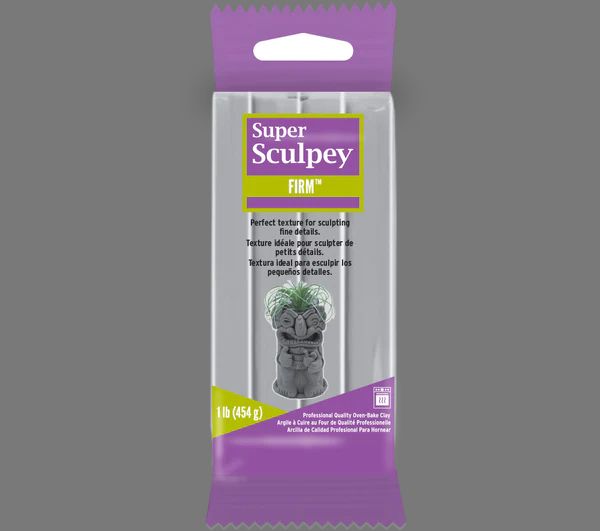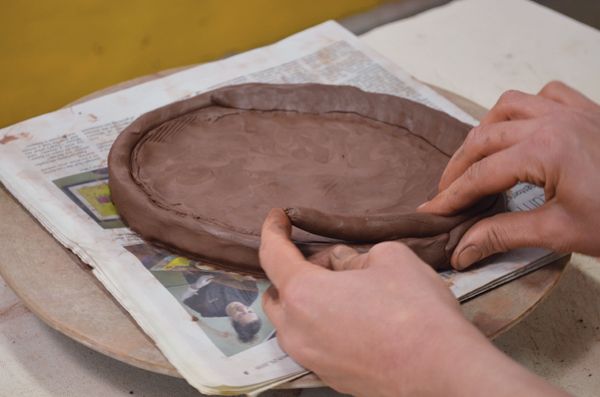How Do You Paint Clay To Look Like Wood?
Painting clay to look like wood opens up many creative possibilities. With some simple techniques, you can transform smooth clay into a convincing wood surface. The process involves building up layers of paint to create a realistic grain pattern. While it takes practice to master faux wood painting on clay, the end result is well worth the effort. This guide will walk through all the key steps to make clay take on the appearance of natural wood.
Supplies Needed
To create a realistic wood grain effect on clay, you’ll need the following supplies:
-
Clay – Preferably polymer clay that has been baked and hardened according to package directions.
-
Acrylic paints – Gather various brown shades for creating the wood grain, along with black or burnt umber for accents and highlighting. You’ll also need a base coat color like beige or cream.
-
Paintbrushes – Small detail brushes and wider brushes will both be useful for creating wood grain effects.
-
Sponge or rag – For dabbing and creating texture.
-
Polyurethane – A clear finish will help seal and protect the painted clay artwork.
-
Sandpaper – Fine grit sandpaper can help smooth the clay surface prior to painting.
Acquiring high quality acrylic paints and brushes will make the wood grain effect much easier to execute cleanly and realistically.
Preparing the Clay Surface
Properly preparing the surface of the clay is crucial for achieving a realistic wood finish. Here are the key steps:
Smoothing: Once you’ve sculpted your clay piece, smoothing out any imperfections is important. Use your fingers or a rubber tool to gently blend away fingerprints, marks, or uneven areas. The smoother the clay, the better the paint will adhere.
Baking: Bake the clay according to package directions to harden and cure it before painting. Baking helps remove moisture and creates a durable surface for the paint. Let the clay cool fully before the next steps.
Sanding: Lightly sand the clay post-baking using fine grit sandpaper. This removes any gloss and creates microscopic grooves for the paint to grip. Don’t sand too much or you may undo your smoothing. Just a light scuffing is sufficient.
Base Coating
The base coating provides the underlying color and helps the wood graining layers really pop. Start by applying 1-2 thin coats of acrylic paint in a wood tone like brown, tan, grey, etc. Watered down paint works best for avoiding brush strokes. Let each coat fully dry before adding the next. Be patient during this step—it creates the foundation. Work in thin layers slowly building up the base color rather than glopping on thick paint all at once.
Cover the entire surface evenly so no clay color shows through. Pay extra attention to hard-to-reach areas like crevices and undersides. Don’t forget the sides! Allow the base coat to cure 24 hours before wood graining. The patience pays off with a smooth, consistent canvas ready for faux wood detailing.
Creating Wood Grain
The wood grain effect is one of the most important techniques for making clay look convincingly like wood. There are a few different ways to achieve a realistic wood grain texture on clay.
Sponging
Sponging is an easy way to create subtle wood grain lines. Simply dab a natural sea sponge or cosmetic wedge sponge in paint and lightly press onto the clay surface. Use a circular motion as you lift the sponge to taper the grain lines. Overlap the sponged areas to blend the grain and avoid harsh edges. You can use multiple colors of paint on a single sponge to mimic wood variations.
Dragging
For a more pronounced grain effect, load a stiff bristled brush with paint and drag it across the clay’s surface. Keep a consistent angle as you pull the brush in the direction of the wood grain. Let the bristles fan out a bit to create grain lines of varying widths. Use lighter pressure to make soft grain lines or push harder for deeper grooves. Wipe excess paint from the brush and go back over areas to refine the grain.
Stippling
Stippling involves using the tip of a stiff bristled brush to create small dots that mimic wood pores or knots. Dip just the tip of the brush in paint and then gently press onto the clay, lifting straight up between each dot. Work in sections, stippling in random patterns. Vary the pressure and amount of paint on the brush tip to create dots of different sizes and intensities.
Highlighting
Once the base coats are completely dry, you can begin highlighting the wood grain texture using a dry brush technique. Dry brushing involves dipping a stiff-bristled brush into paint or glaze, then wiping off most of the excess on a paper towel or rag. When barely any paint remains in the brush, lightly drag or stipple the brush over the raised areas of the clay’s wood grain. This will help enhance the painted texture by creating subtle highlights and lowlights.
Start with a lighter brown, tan, or off-white paint for your first dry brushed layer. Build up the highlighting gradually, allowing each layer to dry fully before adding another. You can add darker accent colors like burnt umber, raw sienna or black to deepen recesses and further emphasize wood grain contours. Work slowly and carefully to control where the dry brush strokes are applied. Target the highlights on the upper ridges, peaks and edges of the clay while allowing some natural texture to show through in the recesses. Soft, random strokes will create a more realistic weathered wood finish.
Finishing
Once you have the wood grain effect completed, the final step is to apply a top coat of polyurethane or varnish to seal and protect the painted surface. This is an essential step for any painted clay project, as it helps make the paint more durable and resistant to chipping or scratching off. Be sure to apply at least 2-3 thin coats of polyurethane, allowing each coat to fully dry before adding the next. Too much polyurethane can result in drips or uneven coverage, so multiple thin coats works better than one thick coat.
Use a soft bristle brush to gently apply the polyurethane following the wood grain pattern. Work in sections, brushing on the finish in smooth strokes. Let the project dry fully upright on a protected surface before repositioning or touching the piece. The number of coats needed depends on the project and intended use. For items that will get frequent handling or use, opt for 3-4 coats for good protection. Avoid sanding between coats unless there are dust particles in the finish, as this can remove the painted wood grain effect.
Once the final coat has dried for the recommended drying time (at least 24 hours), the project can be lightly buffed with extra fine steel wool for an ultra smooth finish. Avoid soft cloths like paper towels during this final buffing, as these can leave fibers in the finish. The project is then ready for use and display!
Troubleshooting
Painting clay can sometimes lead to issues like streaking, bubbling, cracking, or an uneven finish. Here are some tips for troubleshooting common problems when painting clay to look like wood:
Fixing Paint Streaks
If you end up with streaks in the paint, try gently sanding the surface with fine grit sandpaper before applying another coat. Always use light, even strokes and allow plenty of drying time between coats. Thinning the paint slightly with water can also help prevent streaking.
Eliminating Bubbles
Bubbles in the painted clay surface are usually caused by applying the paint too thickly or not allowing adequate drying time between coats. Try using thin coats of paint and allowing each coat to fully dry before adding another. Gently sanding between coats can eliminate existing bubbles.
Preventing Cracks
To avoid cracks in the painted clay finish, make sure to use clay that is thoroughly dried before painting. Additionally, apply paint in thin layers and allow it to dry completely between coats to prevent cracking issues.
Achieving an Even Finish
An uneven paint finish can be fixed by gently sanding the surface and applying another thin, even coat of paint. Using a high quality paintbrush and painting in smooth, consistent strokes can prevent brush strokes and unevenness in the finish.
Inspiration
Painting clay to look like wood opens up many creative possibilities. Here are some examples of beautiful wood-painted clay crafts to inspire your own projects:
-
Faux wood bowls – Coat the inside and outside of clay bowls with wood-grained paint for a natural, earthy look. Try distressing the edges to make them look aged and weathered.
-
Wooden animal figurines – Turn sculpted clay animals into faux wood with realistic paint techniques. Bears, foxes, owls, and other forest creatures are popular options.
-
Textured wall plaques – Brush wood grain acrylics over clay wall hangings to create the illusion of reclaimed barn wood. Add touches like knots and whorls for added realism.
-
Faux timber vases – Use painters tape to mask off straight wood plank designs on round or square vases. When painted and distressed, they look remarkably like wood.
-
Wooden boxes – Paint lids and sides separately in different wood shades and grains. Line interiors with coordinating paper or fabric for beautiful storage boxes.
The possibilities are endless! Allow these ideas to ignite your creativity for woodgrain-painted clay crafts.
Conclusion
Painting clay to look like wood can seem daunting at first, but with the right supplies and techniques, you can create beautiful faux wood finishes on clay objects and sculptures. The process involves properly preparing the clay surface, applying a realistic base coat, adding convincing wood grain effects, highlighting, and protecting the finish with a sealant.
The most important tips to remember are: thoroughly smooth the clay before starting, use acrylic paints in natural wood tones, make grain lines irregular and organic, add knots and wood texture accents, and finish with a matte varnish suitable for clay. With practice and patience, you’ll be able to give clay convincing wood grain effects. Whether you are creating arts, crafts, or decorative objects, faux painted wood clay opens up many possibilities for innovative designs.


